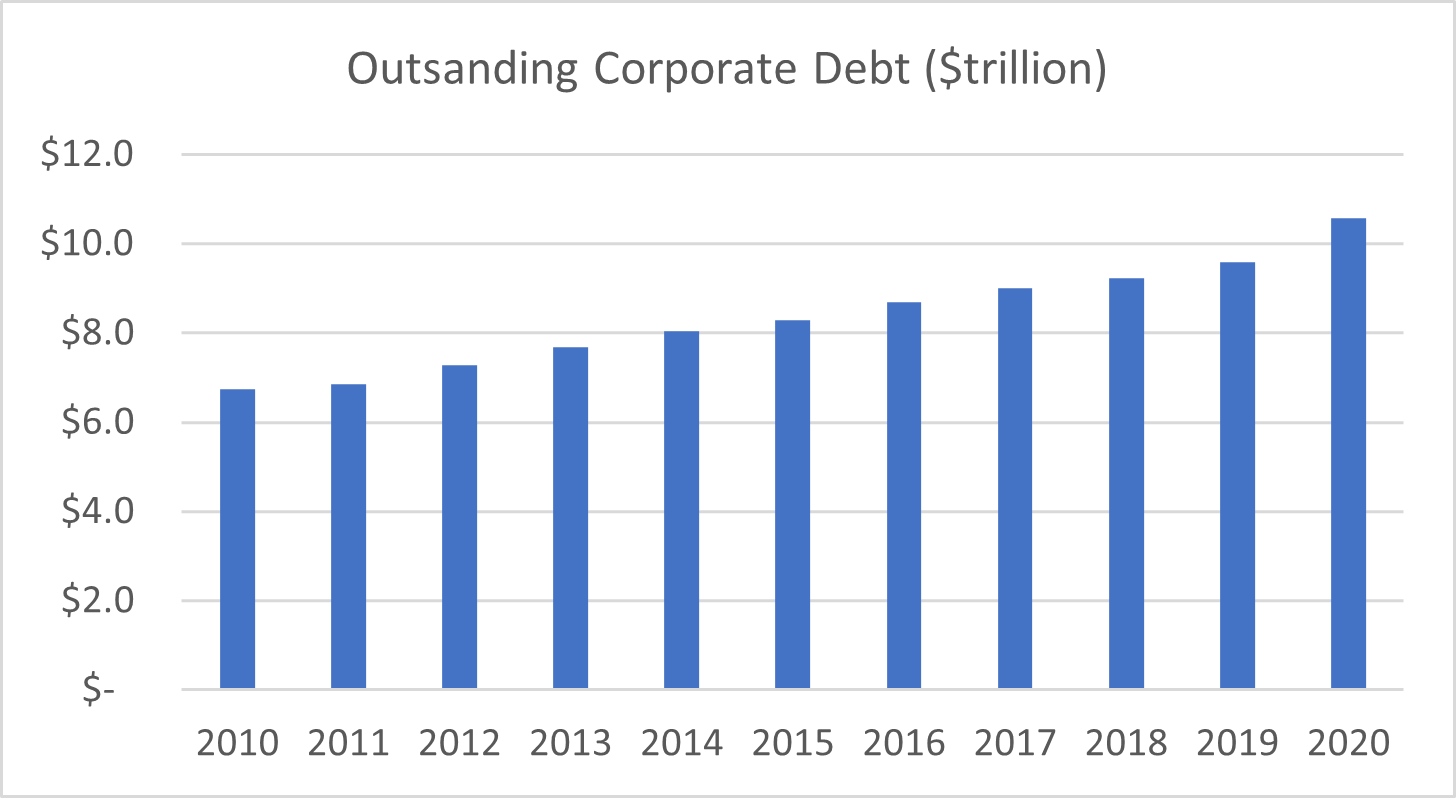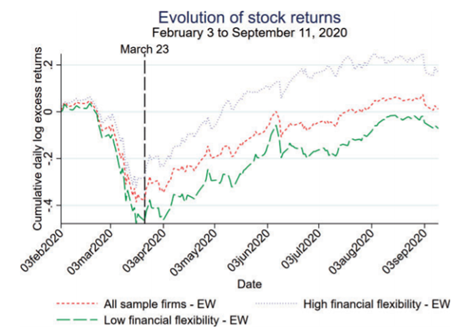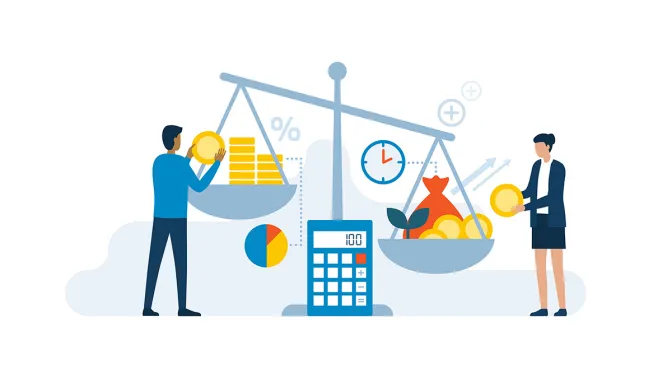
Debt and Financial Flexibility of For-Profits and Nonprofits
By Michelle Lowry, PhD, and Teresa Harrison, PhD
The benefits of financial flexibility can arise from multiple sources. In the first of this series of thought pieces, we highlighted the role of equity in both nonprofit and for-profit firm agility. Here we turn to the linkages between debt and financial flexibility. A broad comparison of the nonprofit and for-profit sectors highlights that too much or too little debt can be equally restrictive, particularly in light of the ongoing pandemic.
Nonprofits are often encouraged to avoid debt. Charity Navigator gives the highest ratings to nonprofits with liability to asset ratios between 0 and 15%, and donors/funders appear to penalize nonprofits with higher debt levels (Calabrese and Mitchell (2019)). Nonprofits have taken this to heart: only 20-30% of nonprofits hold any debt. While we refrain from assessing whether 10% or 15% or even 20% is too high or too low, holding zero debt is more than likely not optimal for most nonprofits.
In contrast to the low levels of debt among nonprofits, corporate debt is reaching unprecedented levels. As of the end of 2020, U.S. companies held a record $10.5 trillion of corporate debt. Corporate debt has increased every year, and it increased by a staggering 10.3% since the onset of the Covid-19 pandemic.

Source: Securities Industry and Financial Markets Association (SIFMA)
What do these rates of borrowing mean for the underlying companies and organizations? The benefit of debt, in particular debt with low interest rates, is that it represents a source of capital that can be used to fuel growth. A working paper by Calabrese and Mitchell (2021) suggests that many nonprofits would benefit from more debt. They find that nonprofits with above-median interest expenses are associated with stronger spending growth, consistent with the notion that properly deployed debt can be an advantage.
On the corporate side, research by Fahlenbrach, Rageth, and Stulz (2020) highlights the costs of debt when firms’ leverage is too high. Companies with higher levels of debt tend to have less financial flexibility, and companies with lower flexibility tend to fare worse during crisis periods. While the stock market value of nearly all companies fell around the onset of the Covid-19 pandemic, the decrease among companies with lower financial flexibility was significantly greater. Moreover, these disadvantages persisted: six months after the onset of the pandemic in the United States, the stock prices of the low flexibility firms remain lower (shown in green line in figure below). Analogously, the stock prices of the high flexibility firms remain higher (shown in gray line).

Source: Fahlenbrach, Rageth, and Stulz, 2020. How valuable is financial flexibility when revenue stops? Evidence from the Covid-19 crisis. Review of Financial Studies, forthcoming.
The United States is beginning to envision a recovery period. An increasing number of individuals are being vaccinated, and people are starting to plan a return to school and work. Well-governed companies are having detailed conversations regarding this transition period. One key topic of these conversations should relate to capital structure. How much debt has the company accumulated during the past year? What are the costs and benefits to this perhaps higher debt level? Should the company seek to repay some of this debt? The answers will vary across companies. It appears that on average nonprofit and for-profits may be on different ends of the spectrum, with nonprofits carrying too little debt and for-profits too much. We urge Boards of Directors to think carefully about where their individual organization falls on this spectrum. Key factors to consider include both the advantages of this low-cost funding and the disadvantages in terms of lower financial flexibility going forward. Strategic discussions at the board level regarding a firm’s debt are key, and they should be discussed from the perspective of financial and organizational flexibility and resiliency.




